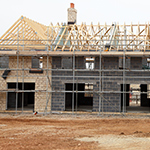 Aberdeen City Archives recently held an exhibition called “The Art of the Building Warrant”. The exhibits were original building warrant plans of iconic Aberdeen buildings past and present such as the Northern Hotel with its Art Deco frontage, the police office at Lodgewalk, the Pittodrie Pavilion and the Tivoli Theatre. Looking in particular at the symmetrical lines of the plans of the Tivoli theatre it is obvious that drawing a building warrant plan can be a work of art.
Aberdeen City Archives recently held an exhibition called “The Art of the Building Warrant”. The exhibits were original building warrant plans of iconic Aberdeen buildings past and present such as the Northern Hotel with its Art Deco frontage, the police office at Lodgewalk, the Pittodrie Pavilion and the Tivoli Theatre. Looking in particular at the symmetrical lines of the plans of the Tivoli theatre it is obvious that drawing a building warrant plan can be a work of art.
No matter where you are reading this, the chances are that you will be sitting in a building which at some point has been the subject of a building warrant. The submission of plans to the Local Authority for approval and the grant of a building warrant for those plans has been part of our lives for many years. Modern building warrant legislation dates back to the Building (Scotland) Act 1959, but building warrants themselves have been in existence for some years before that. The building warrant plans for the Tivoli Theatre date back to 1872. However, in over 35 years experience of property transactions, I can say that nothing gives more trouble than a building warrant, or more accurately, the lack of one. If alterations which require a building warrant are carried out without one, this can cause untold problems and delay in a house sale even leading to the sale being called off. Also, mortgage lenders may not be prepared to lend on a property which has unauthorised alterations and that may radically affect its value. Anyone carrying out unauthorised alterations to their property should realise that he or she might directly be affecting the value and marketability of the property.
If the alterations were carried out before 1 May 2005 without a building warrant, there is a procedure whereby a “Letter of Comfort” can be obtained from the Local Authority. This is a letter confirming that the Local Authority will not take any action against the owner. Unauthorised alterations taking place after that date will require a retrospective building warrant which can be a time consuming and costly procedure. Fees for retrospective applications are substantially higher than for normal applications.
The message is clear. Check with the Local Authority or a qualified architect or building consultant whether or not a building warrant is required before carrying out any alterations. Many minor alterations do not require a building warrant but you cannot assume that and it is better to be safe than sorry. The building regulations are complex and constantly changing. Alterations which may not have required building warrant in the past may need one now. Don’t put yourself in the position of having to obtain retrospective building warrant for alterations in a hurry when you are selling or remortgaging your property.
Should you wish any further guidance on the requirement for building warrants, or indeed any other conveyancing related matter, please contact the author, Forbes McLennan, by telephone on 01224 581581 or by email at This email address is being protected from spambots. You need JavaScript enabled to view it.
